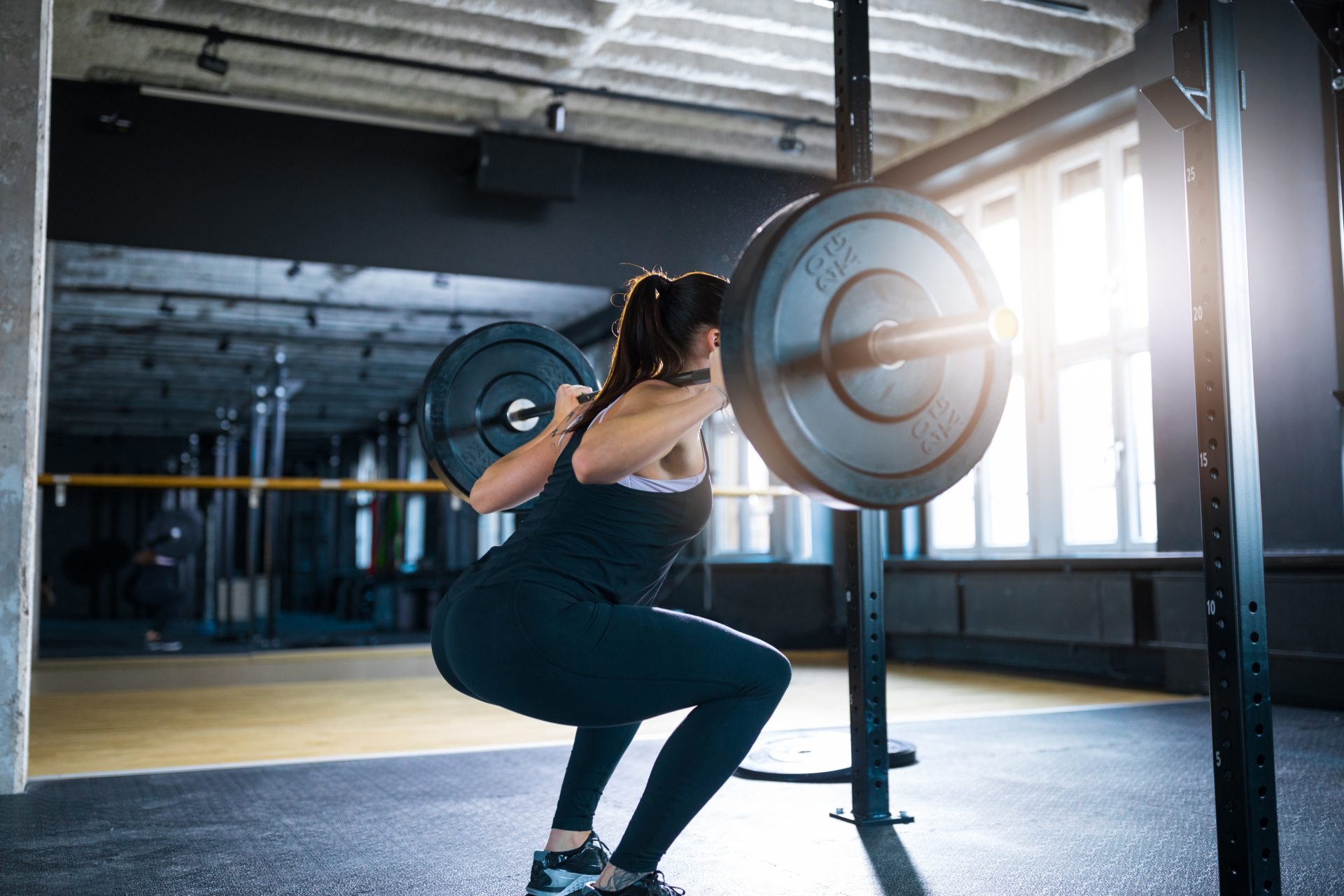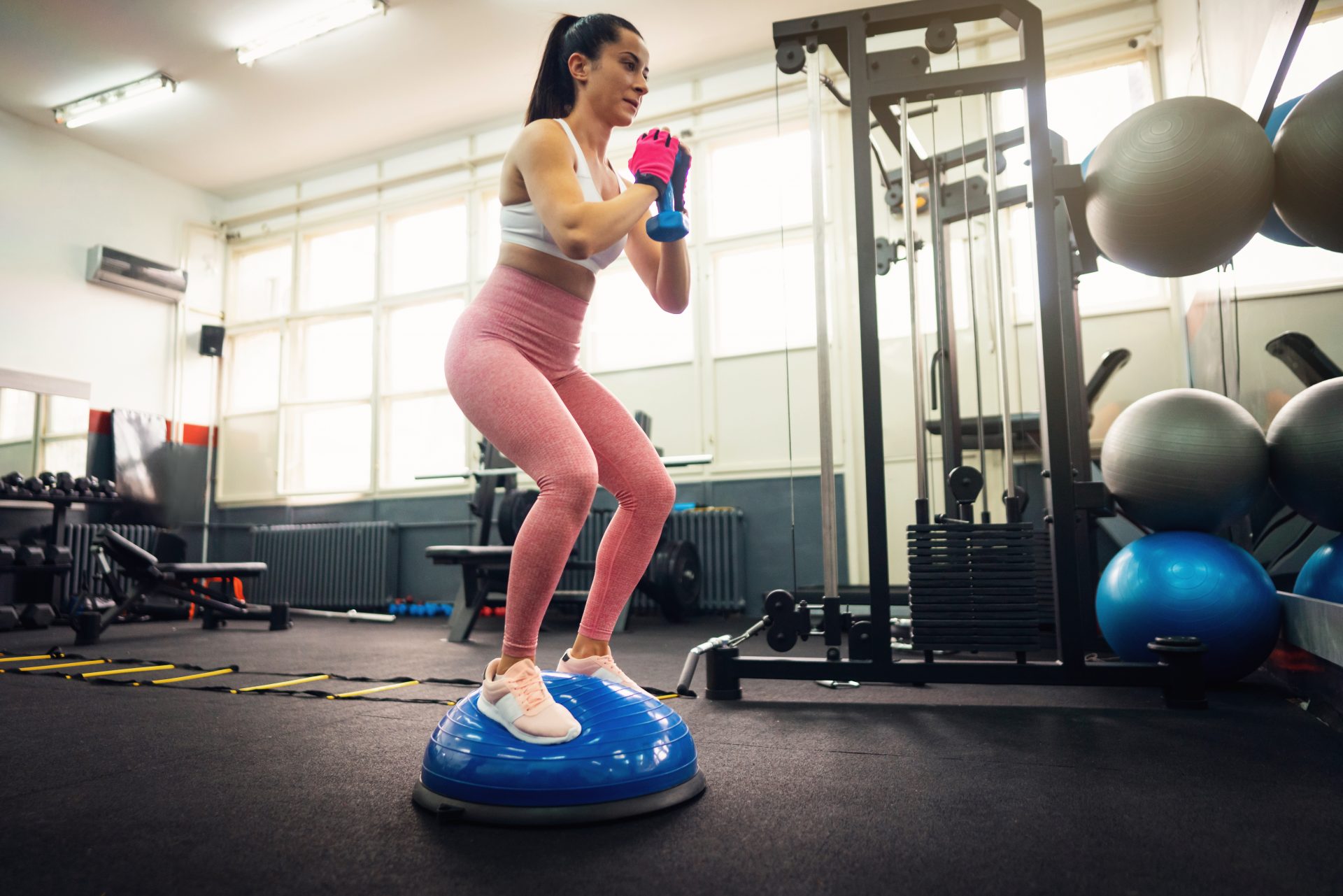
You might want to rethink your training if you’re using bosu balls and balance boards to build a stable body…
If the goal of your training is to build a strong body for life, stability training should be a part of that. That’s because most tasks that we do in real life are unilateral, or involve shifting weight between different sides: that includes walking, running, most sports and carrying bags or babies. Being stable, ie being able to control your body while it’s moving, means better function every day.
The fitness world knows the importance of this. It’s why gym and exercise machines have been purpose build to improve the skill – such as bosu balls, balance boards and suspension rigs. “Instability training usually involves performing resistance exercises on an unstable surface by using unstable devices, or by reducing the base of support,” explains exercise physiologist Dr Bryna Chrismas. Think squats on a wobble board or balancing on one leg on sandbags.
You may also like
What’s the difference between strength and resistance training?
The problem, according to Chrismas, is that this isn’t the best way to actually build a stable body.
Do stability machines work?
The reason these unstable surfaces don’t work is because stability comes from muscular strength. The best way to build that? “With traditional resistance exercises like squats, deadlifts, and Olympic lifts,” Chrismas says.
We build strength by creating force through muscles – these big compound lifts generate a lot of force, hence why they help us get stronger. “Muscle force is reduced when resistance exercises are performed in unstable conditions,” Chrismas explains, which is why this type of training can’t beat straightforward weight lifting when it comes to improving stability. On average, studies (including a 2021 paper from International Journal of Environmental Research and Public Health) have shown there’s almost a 30% reduction in force or power when training on unstable surfaces.

“Instability training also affects the speed in which the movement is performed and the range of motion you move through, whether that is performing a bench press on an exercise ball, or squatting on a wobble board,” Chrismas adds.
That’s not to say you should turn your nose up at all unstable surfaces. While they may not improve stability, they can build better balance – the control of your body in static positions – and proprioception. “Some studies show improvements of up to 105%, which is great for reducing the number of falls you may experience as you get older,” says Chrismas. But these exercises should generally not be done with added resistance for safety and form, she explains.
How to improve stability
“Resistance exercises that include contact with the ground or a stable surface such as a bench or chair are the greatest way to improve strength, and create force and stability in your joints,” Chrismas says.
You may also like
Good balance prevents injury and improves posture – try these 7 tips for a solid stance
The exact number of sets, reps and exercises needed? “This will depend on your goal, preferences and training history,” says Chrismas. The American College of Sports Medicine (ACSM) recommends eight to 10 multi-joint exercises using the major muscle groups, around eight to 12 repetitions and two to three sets of each. Doing that a couple of times a week will set you on the right path to a more stable body.
You don’t need to throw unilateral training out either. It is a type of instability training, as you only load one side of the body, so it won’t build as much strength as stable exercises. But single side work has other benefits: “It’s useful for those with an injury, a difference in strength, limb differences or disabilities,” explains Chrismas.

“What is also pretty cool about unilateral training is that these muscle contractions stimulate the neural activity in the contralateral (opposite) and inactive limb, leading to increased strength in the side that’s inactive. This is sometimes called cross-talk, cross-education or cross-over training. Obviously, if you can train both sides then you should, as increases in strength from cross-education won’t be as significant as if the other side actually did the work.”
For the gym-goers who just want to get stronger and improve their day-to-day lives, Chrismas recommends “generating force and power through traditional resistance exercise, performed with good stability, correct form and contact with a stable surface. Use instability devices without resistance before your training, or at home, to help with your balance so hopefully you won’t have to focus on instability training as part of an injury rehabilitation programme. Prevention is definitely better than cure here.”
Test your stability with one of our unilateral-heavy workout videos, over on the Strong Women Training Club.
Images: Getty
Source: Read Full Article